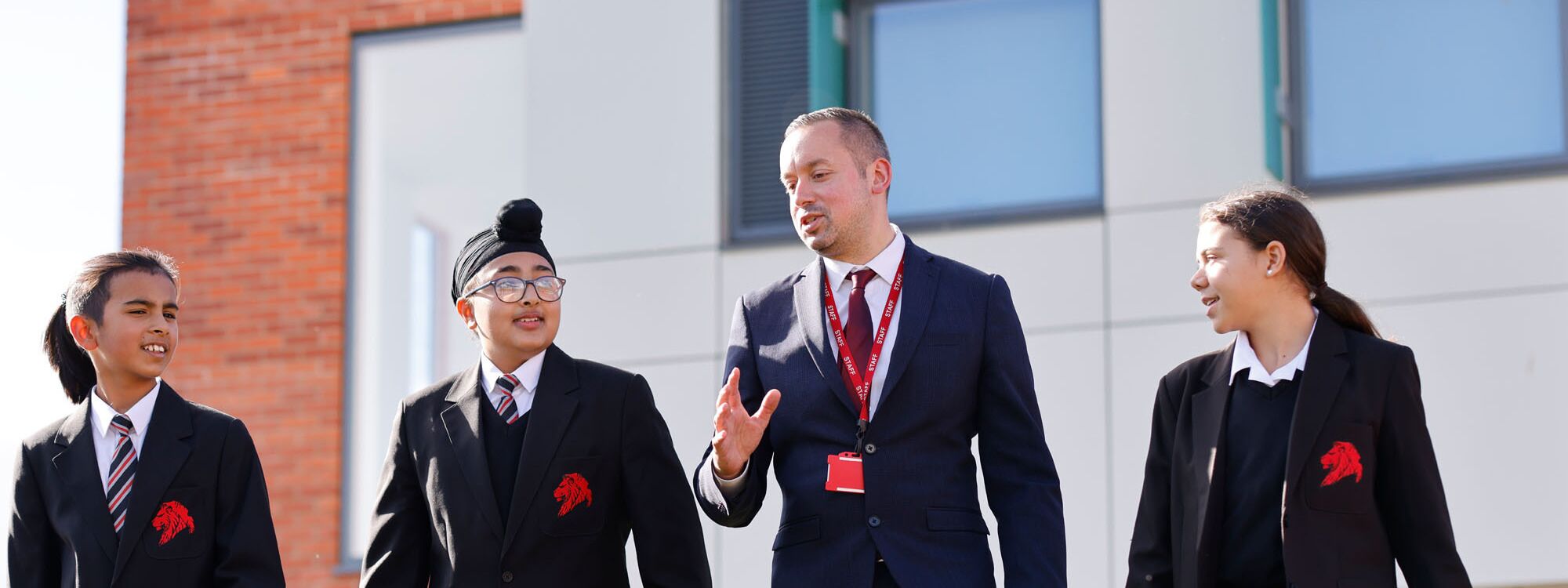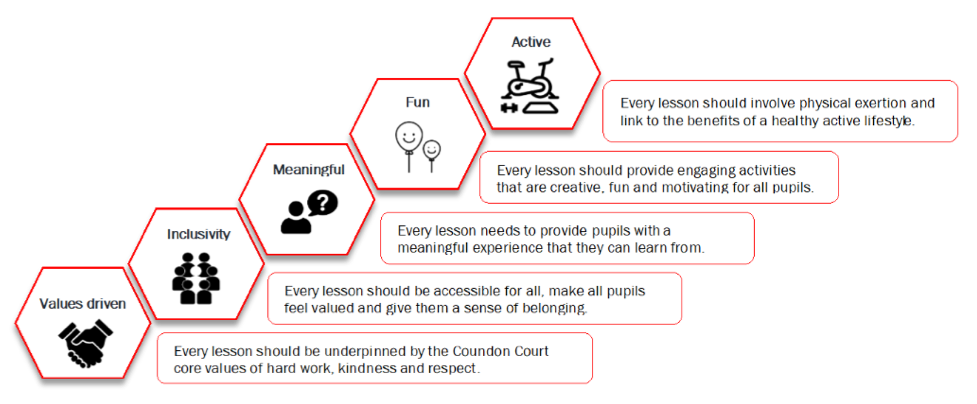
- Home
- Curriculum
- Subject Information
- Physical Education
Physical Education
We believe Physical Education installs the understanding of the impact that physical activity has on your body and how it supports a healthy lifestyle.
Our curriculum encourages students to develop the intrinsic motivation to remain physically literate beyond their school years. We provide an inclusive environment that creates physically educated students; through Physical Education, students will participate in a variety of sporting activities on a rotational basis, where they will improve and embed their motor competence whilst exploring key concepts in physical activity and sport. Alongside this, they will develop their knowledge and understanding of the rules, strategies and officials in games, and understand what it means to maintain a healthy lifestyle.
In Key Stage Core Physical Education, from Years 7-11, students will participate in the following sports on a rotational basis.
|
Outdoor Games/Basketball |
Badminton/Table tennis |
Rounders/Cricket |
Athletics |
Gymnastics |
Health & Fitness |
|
Passing/receiving Defending Attacking Travelling Shooting |
Serve Forehand/Backhand Attacking/defending shots
|
Throwing/Catching Stance Hitting into space Fielding techniques |
Run sprint/Distance Jump Throw |
Balance Travel Rotations Sequences |
Components of fitness Training methods Principles of training Health and fitness for life |
|
Year 7 |
Year 8 |
Year 9 |
Year 10 |
Year 11 |
Year 12/13 |
|
Participation & Performance Creating a love for PE by the development of fundamental movement skills in isolation and small competitive practices. Developing skills to analyse performance. |
Participation & Performance Developing and embedding skills in conditioned practices and small competitive practices. |
Participation & Performance Developing tactics and strategies and building on skills in games. |
Participation & Performance Development of lifelong participation in sport through core PE. Analyse own and others performances and use tactics to outwit opponents. |
Participation & Performance Development of lifelong participation in sport through core PE. Analyse own and others performances and use tactics to outwit opponents. |
Sports’ Leaders Level 2 Course
Or
A level OCR Physical Education
|
|
Rules, strategies & tactics To understand the basic rules in the sports studied. |
Rules, strategies & tactics To apply the rules to sporting activities. |
Rules, strategies & tactics To apply the rules and roles of different officials to set scenarios, and officiate own games effectively. |
Rules, strategies &, tactics Explain all rules across a range of sports. Apply the rules to a variety of scenarios. Understand the roles and responsibilities of officials. Start to develop confidence in using sporting facilities. Understanding how to access fitness classes/ sports facilities outside of school. |
Rules, strategies& tactics Effectively apply the rules and regulations to all sporting activities and organise and lead them.
Develop confidence in using sporting facilities. Understanding how to access fitness classes/ sports facilities outside of school. |
|
|
Heathy Participation Know how to be physically active in and out of school. Connecting health to physical activity.
|
Heathy Participation Know how and why it is important to be active. |
Heathy Participation Know how to look after physical, social and mental health and how PE can help with this. |
Heathy Participation Know how having a healthy lifestyle can have a positive impact for life. |
Heathy Participation Knowing how and why being physically active can have an impact on exams. |
In Key Stage 4 if students opt to study GCSE OCR Physical Education students will study:
|
|
Term 1 |
Term 2 |
Term 3 |
|
Year 10 |
Physical training; Components of fitness/methods of training/principles of training/ optimising training. Prevention of injury. The structure and function of the skeletal system. |
Movement analysis; Planes of movement and axes of rotation & levers. The structure and function of the muscular system The cardiovascular system. |
The respiratory systems. Effects of exercise on body systems. Health, fitness and well-being, diet & nutrition. |
|
Year 11 |
Sports psychology Participation rates |
Engagement Patterns Commercialisation Ethics in sport
|
|
In Key Stage 5 students will study OCR A Level Physical education:
|
|
Term 1 |
Term 2 |
Term 3 |
|
Year 12 |
Sport & Society; Emergence and evolution of modern sport Global sporting events Applied anatomy & physiology; skeletal & muscular systems Skill acquisition |
Contemporary Issues in sport Applied anatomy & physiology cardiovascular and respiratory systems. Principles of training. Skill acquisition; memory models |
Diet, nutrition & ergogenic aids. Injury prevention & the rehabilitation of injury. Principles of training Sports psychology; Group and team dynamics, goal setting in sports performance. |
|
Year 13 |
Bio-mechanics Energy for exercise. Sports psychology; attribution, confidence & self-efficacy in sports, leadership.
|
Biomechanics Environmental effects on the body. Sports psychology; Stress management to optimise performance. |
|
If you wish to receive further information regarding our Physical Education curriculum, please send an email to admin@coundoncourt.org and mark it FAO Mrs L Hawkes, Learning Team Leader for Physical Education.

